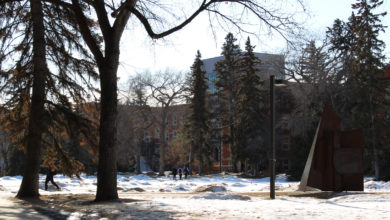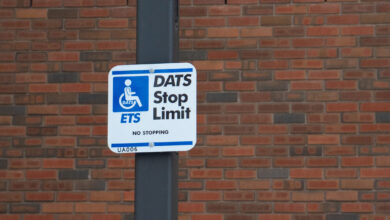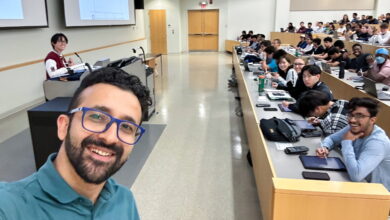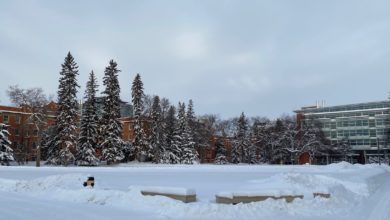U of A education faculty and student speak on teachers’ strike and interrupted practicums
The teachers' strike has interrupted some practicums for U of A students and created uncertainty about their future in the education system.
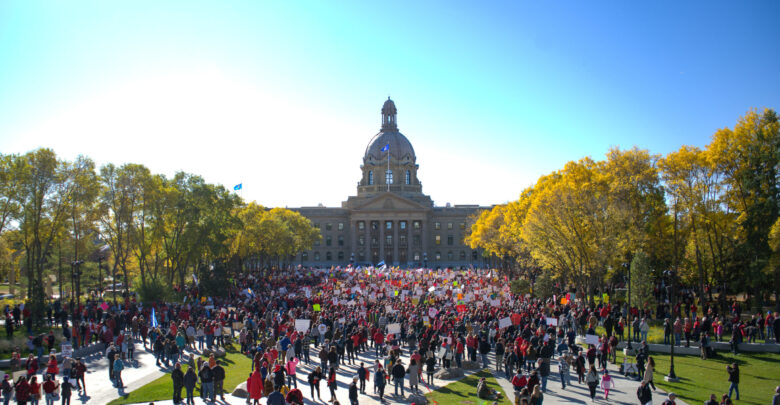 Leah Hennig
Leah Hennig On October 6, approximately 51,000 Alberta teachers began a strike that has lasted three weeks so far. During this strike, the Alberta Teacher’s Association (ATA) has drawn attention to issues such as wages not keeping up with inflation, increasing classroom sizes and complexity, and the need for a cap on class sizes.
While classes at the University of Alberta have continued on uninterrupted, the strike has not gone unnoticed by students and faculty within the faculty of education. The Gateway spoke with two faculty members and a student within the faculty of education to get their perspectives on the strike and understand its impacts on prospective teachers.
Associate professor says province is choosing not to invest in public education
Sara Carpenter is an associate professor in the faculty of education in educational policy studies. Ultimately, rather than the strike being due to material factors, Carpenter sees the causes as ideological.
“This is a wealthy province right? And so we’re choosing not to invest money in education. By doing that, by divesting, [we] turn public education systems into entities that seem to not function and that are not worth further public investment and are not worth the energy of citizens.”
For kindergarten to grade 12, growing class sizes present a number of issues, Carpenter said. One issue Carpenter raised is that in large classes it becomes difficult for teachers to form relationships with their students and understand them as individuals. With that, there is the risk that students become reduced to character archetypes and racial, gender, and class stereotypes.
“And all of that complex reproduction of ideologies and ways of thinking about communities and people starts to sort of get out of hand, because people literally don’t have the time to form human relationships with each other.”
Large classroom sizes also contribute to teacher burnout, which leads to people leaving the profession all together, Carpenter said. In their role, teachers deal with more than just delivering lesson plans, such as social problems affecting their students.
“Schools are not hermetically sealed boxes. They are social places in which society lives.”
While Carpenter is sympathetic to those affected by the strike, “a strike is always a last resort.”
“People don’t go on strike sort of willy-nilly. They go on strike because other attempts at reasonable negotiation have failed. And they have failed because the employer, in this case, the province, has made them fail.”
Through striking, educators are demanding the conditions that will allow them to provide high quality education, Carpenter said. She hopes that the strike sparks a conversation about why “such drastic action is needed by those closest to the internal working of the system.”
Education student says she and other classmates are considering whether a career in education is sustainable
Laiba Shaikh is the vice-president (finance) of the Education Students Association (ESA). According to Shaikh, news of the strike wasn’t a surprise to students.
“I think it’s one of those things where you hear about it so much you’re like ‘okay is it actually going to happen?’”
Shaikh is due to start her first practicum on November 3. The Advanced Field Experience however, was supposed to start October 6, the first day of the ATA strike. To receive their Bachelor of Education degree, students are required to complete Introductory Field Experience near the beginning of their degree and Advanced Field Experience near the end of their degree.
“There’s been a lot of confusion surrounding that. People are worried that they’re not going to get their placements, they’re not going to get this really valuable experience.”
Regardless of anxiety around the interrupted practicums, Shaikh noted that students are supportive of the strike.
“Ultimately this is something that needs to happen, because the way that the government has treated public education, it’s just a constant attack on one of the most important things in our society.”
Having attended primary education in Alberta, Shaikh noticed increasing class sizes firsthand. In junior high she remembers there being a maximum of 22 students per class. When she began high school, that jumped to 35–40 students in each classroom.
“I think it’s one of the most important things that they’re focusing on right now, and that’s why there’s such an emphasis on it,” Shaikh said. “As a teacher, it’s so difficult to manage that many students all at once.”
Teaching is something Shaikh is passionate about, she said. However, as an upper-year student, she is considering whether teaching is a sustainable career.
“I really do want to stick it through … because I think public education is important. So [I’m] just really hoping for a good deal.”
According to Shaikh, she is not alone in reconsidering her career path after graduation. She’s noticed it amongst her fellow students and friends. Rather than teaching, friends of hers have chosen to pursue graduate school, the sciences, and attend law school.
“Really we do have to wonder, how many teachers are we going to have left after this if there isn’t a different deal?”
Field experience team lead is “fairly confident” they can get practicum students into schools this term
Roberta Baril is the team lead of field experience within the faculty of education. After years of declining conditions for teachers, Baril said the strike wasn’t a surprise, but that there was hope it wouldn’t get to this point. For faculty who are “surrounded by the future of education,” it has elicited “deep concern.”
“The people that enter into this faculty do so because they are enthusiastic about influencing future generations of students,” Baril said. “They’re hopeful. They’re optimistic, right? And so when something like this happens, it really ramps up the fears in all the people that are dealing with it.”
In her role, Baril has been managing the interruption to practicums. Education degrees are based on a combination of theory and practice, with practicums giving students a chance to execute what they’ve learned throughout their degree, Baril explained. Students need practicums to graduate and to apply for teaching certification with the province of Alberta.
“We really see the practicum … as being that bridge between seeing yourself as a student and seeing yourself as a teacher in the classroom.”
The faculty of education places about 1,000 pre-service teachers in schools per term, 400 of those completing their Advanced Field Experience, Baril said. Knowing that a strike might be a possibility, Baril said her team began strategic planning several months ago.
The team contacted the 50 school districts to let them know that even in the event of the strike, they will place students in schools when possible, even if it means the practicums are shorter than normal.
“We’ve made sure that we have constant communication with those students that are supposed to be out to let them know that we’re making plans, that we’re having conversations, that we have their backs in terms of doing everything we can to allow them to move forward.”
Practicums can go ahead, even under work-to-rule job action
Currently the team is planning for potential starts to practicums, depending on when the strike ends. Baril said they are “fairly confident” they can get students into schools this term and that the goal is to have a plan that “supports students [and] preserves the integrity of their field experience.”
With the Government of Alberta planning to pass back-to-rule legislation, it is possible practicums could begin sooner rather than later. If this legislation is passed, it is possible that the ATA may respond with work-to-rule job action. This would mean that teachers would return to schools but stick strictly to the terms of their contracts.
Baril has been told by both their partner schools and the ATA that mentoring student teachers would fall within a teacher’s professional responsibilities.
“And so even in a work-to-rule environment, taking on pre-service teachers would still be acceptable, all right, and even encouraged.”

